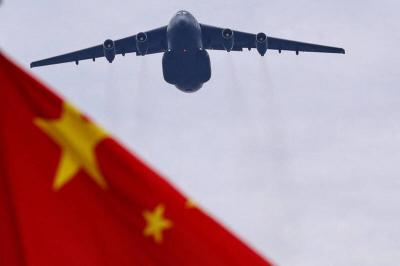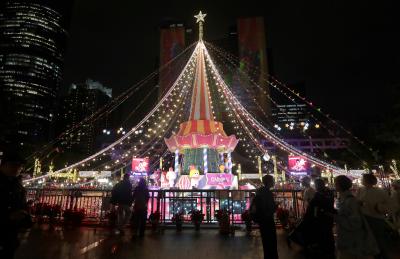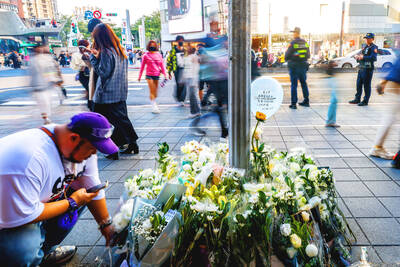Although the Ministry of National Defense and some Chinese Nationalist Party (KMT) legislators played down the significance of an incident involving two Chinese fighter aircraft in the Taiwan Strait late last month, analysts say the matter is more than simply routine.
Confirming on Monday media reports that one of two Chinese Sukhoi-27 fighter aircraft shadowing a US U-2 spy plane had crossed the median line in the Taiwan Strait on June 29, ministry officials maintained this was an isolated incident and did not regard it as provocative.
The Chinese aircraft are believed to have been from the 40th Fighter Regiment, 14th Fighter Division at Nanchang-Xiangtang Air Base in Jiangxi Province.
Although the intrusion — reportedly the first since an April 1, 2001, mid-air collision between a US Navy EP-3 aircraft and a Chinese J-8 fighter — prompted the ministry to dispatch two F-16s to intercept the Chinese fighters, KMT legislators said Beijing would not seek to provoke Taiwan at a time when relations in the Taiwan Strait are “at their best in decades.”
KMT Legislator Herman Shuai (帥化民), for one, said the incident was likely the result of pilot error.
A US Department of Defense spokesperson confirmed to the Taipei Times on Tuesday that a U-2 aircraft from the US Air Force was conducting a routine operation in international airspace in the area of the East China Sea on June 29.
As a matter of policy, the US official would not discuss details of specific missions or operations.
“In general, these reconnaissance flights are conducted in international airspace, as are the People’s Republic of China intercepts, which happen fairly routinely,” the spokesperson said. “There is no ‘repel’ aspect to them.”
US Pacific Command (PACOM), which has operational control of the surveillance flights, also confirmed the information.
A PACOM official contacted for comment said it would be inappropriate to speculate on the reasons why Chinese aircraft crossed the centerline in this particular incident.
Beijing has repeatedly called on Washington to cease the surveillance flights, claiming they infringe on its sovereignty and since 2007 China has frequently dispatched fighter aircraft close to the median line when such US surveillance flights occurred.
Asked to comment on the significance of last month’s incident, Roger Cliff, a specialist on the Chinese air force at the Project 2049 Institute, said it was more provocative than Taipei let on.
“Unless China has frequently done so in the past, which I doubt, crossing the centerline to shadow a U-2 is rather provocative,” he said. “I can’t think of any reason why China would start to do that at this particular time, but Beijing does regularly complain about intelligence and reconnaissance activities conducted against it, even when they are conducted in international waters or airspace. It is getting more assertive in its efforts to prevent them.”
Whether this was an isolated incident or another sign of China’s growing assertiveness, Taiwan should take this very seriously, Cliff said.
“Taiwan wouldn’t want the regularity with which such incidents [could] occur to cause them to stop responding. One day it might not be a probe, but rather the beginning of an actual attack on Taiwan,” he said.
Less alarmed by the incident was Gary Li, an intelligence analyst at UK-based Exclusive Analysis.
“The PLAAF [People’s Liberation Army Air Force] guys didn’t really do anything too aggressive, with one of them straying over the line for a little while,” he said, cautioning, however, that this could just be the agreed report given by both sides to avoid escalating the situation.
Asked to comment on the reasons why, barring pilot error, the PLAAF would have allowed one of its aircraft to cross the median line at this particular point in time, Li offered a number of possibilities, starting with the position that China would not have made the decision to violate the centerline lightly.
“Beijing could be sending a message to the US in light of the developments in the South China Sea by harassing their routine intelligence assets” in a matter reminiscent of the “harassing” of the USS Impeccable, a US naval survey ship, by five Chinese vessels off Hainan Island in March 2009, he said.
Another possibility, Li said, was that the U-2 was gathering intelligence that was highly sensitive — perhaps new missiles being deployed or new naval assets — which could have forced the Chinese to be more daring than they normally are.
It could also be that the frequency of surveillance missions by the US has recently increased, he said.
“Even though U-2 flights are routine, they still can monitor inland intelligence due to their altitude. So the argument that they were in international airspace doesn’t really mean much to the Chinese as far as intelligence preservation is concerned,” he said.
Li speculated that the two PLAAF aircraft were not Su-27s, but rather J-11s, as the 17,500m ceiling of the aging Su-27 would make it hard to threaten the high-altitude U-2, which usually operates at about 21,000m.
The J-11, a Chinese variant of the Russian-made Su-27, has an operational ceiling of 18,500m and is equipped with medium-range air-to-air missiles. Nanchang-Xiangtang Air Base has both Su-27UBK and J-11 aircraft.
If this was the case, the PLAAF may have wanted to demonstrate to the US that China now has the capability to threaten its high-altitude assets, Li said.

Beijing could eventually see a full amphibious invasion of Taiwan as the only "prudent" way to bring about unification, the US Department of Defense said in a newly released annual report to Congress. The Pentagon's "Annual Report to Congress: Military and Security Developments Involving the People's Republic of China 2025," was in many ways similar to last year’s report but reorganized the analysis of the options China has to take over Taiwan. Generally, according to the report, Chinese leaders view the People's Liberation Army's (PLA) capabilities for a Taiwan campaign as improving, but they remain uncertain about its readiness to successfully seize

Taiwan is getting a day off on Christmas for the first time in 25 years. The change comes after opposition parties passed a law earlier this year to add or restore five public holidays, including Constitution Day, which falls on today, Dec. 25. The day marks the 1947 adoption of the constitution of the Republic of China, as the government in Taipei is formally known. Back then the Chinese Nationalist Party (KMT) governed China from Nanjing. When the KMT, now an opposition party in Taiwan, passed the legislation on holidays, it said that they would help “commemorate the history of national development.” That

Taiwan has overtaken South Korea this year in per capita income for the first time in 23 years, IMF data showed. Per capita income is a nation’s GDP divided by the total population, used to compare average wealth levels across countries. Taiwan also beat Japan this year on per capita income, after surpassing it for the first time last year, US magazine Newsweek reported yesterday. Across Asia, Taiwan ranked fourth for per capita income at US$37,827 this year due to sustained economic growth, the report said. In the top three spots were Singapore, Macau and Hong Kong, it said. South

HORROR STORIES: One victim recounted not realizing they had been stabbed and seeing people bleeding, while another recalled breaking down in tears after fleeing A man on Friday died after he tried to fight the knife-wielding suspect who went on a stabbing spree near two of Taipei’s busiest metro stations, Taipei Mayor Chiang Wan-an (蔣萬安) said. The 57-year-old man, identified by his family name, Yu (余), encountered the suspect at Exit M7 of Taipei Main Station and immediately tried to stop him, but was fatally wounded and later died, Chiang said, calling the incident “heartbreaking.” Yu’s family would receive at least NT$5 million (US$158,584) in compensation through the Taipei Rapid Transit Corp’s (TRTC) insurance coverage, he said after convening an emergency security response meeting yesterday morning. National